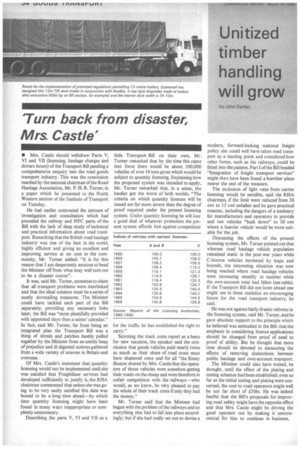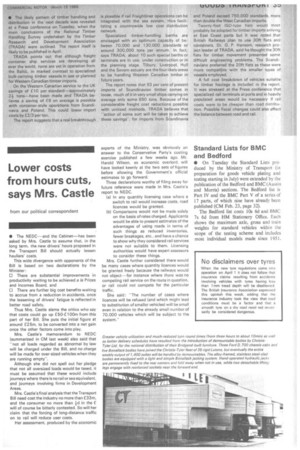Unitized timber handling will grow
Page 36

Page 37

If you've noticed an error in this article please click here to report it so we can fix it.
by John Darker • The likely pattern of timber handling and distribution in the next decade was revealed at a Press conference on Tuesday. when the main conclusions of the National Timber Handling Survey undertaken by the Timber Research and Development Association (TRADA) were outlined. The report itself is likely to be published in April.
TRADA points out that although freight container ship services are developing all over the world, none are yet in operation from the Baltic, in marked contrast to specialized bulk-carrying timber vessels in use or planned for Western Canadian timber imports.
On the Western Canadian service to the UK savings of £10 per standard—approximately 2-1 tons -have been made and TRADA believes a saving of £6 on average is possible with container-style operations from Scandinavia and Poland. This could lower import costs by £2/3 per ton.
The report suggests that a real breakthrough is possible if rail Freightliner operations can be integrated with the sea system, thus facilitating a countrywide low cost distribution network.
Specialized timber-handling berths are envisaged with an optimum capacity of between 70,000 and 130.000 standards or around 300.000 tons per annum. In fact, says TRADA, about 10 such special berths or terminals are in use, under construction or in the planning stage. Tilbury. Liverpool, Hull and the Severn estuary are the four likely areas to be handling Western Canadian timber in future years.
The report notes that 93 per cent of present imports of Scandinavian timber comes in loose, much of it in very small ships carrying on average only some 650 tons. Because of the considerable freight cost reductions possible with unitized methods. TRADA believes that "action of some sort will be taken to achieve these savings", for imports from Sandinavia and Poland exceed 750,000 standards more than double the West Canadian imports.
Twenty-foot ISO-typo flats would most probably be adopted for timber imports arriving at East Coast ports but it was noted that British Railways plan to use 30ft flats and containers. Dr. 0. P. Hansom, research project leader of TRADA, said he thought the 30ft flats for timber movement presented some difficult engineering problems. The Scandinavians preferred the 20ft flats as these were more compatible with the smaller types of vessels employed.
A full cost breakdown of vehicles suitable for timber haulage is included in the report. It was stressed at the Press conference that specialized rail terminals at ports and in heavily populated areas would be necessary if rail costs were to be cheaper than road distribution. Possible fiscal changes could also affect the balance between road and rail.




































































































































